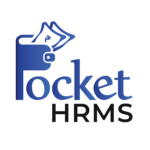
Top 5 Reasons to Choose Integrated HRMS with Payroll
Table of Contents

Reading Time: 8 minutes
Processing payroll in organizations is difficult due to the numerous factors involved in calculating it accurately. While employees often understand it to be an automated task, ask any HR personnel what they think about it, and you will get something along the lines of, “It is my worst nightmare!”
Nowadays, with the help of technology, payroll processing has become more streamlined. You can deploy a dedicated payroll solution to automate almost all aspects of payroll calculations and distribution.
However, it can be further optimized by integrating it with a Human Resources Management System (HRMS). But then, how exactly does this integration work? What are the benefits of integrating HRMS with Payroll?
Let us find out!
What is HRMS and Payroll Integration?
Before we understand the benefits of integrating HRMS with payroll, let us make clear what we mean by this integration. HRMS is a system used by companies to manage their human resources and associated tasks such as recruitment, onboarding, attendance, reporting, performance, etc. On the other hand, a payroll system is concerned with calculating employee payroll by deducting taxes and ensuring that it follows all compliance requirements, and distributing salaries.
When you integrate HRMS with payroll, you get the benefits of both systems, along with some unique features such as a singular employee database that consists of their professional and payroll data. Such an integrated database helps avoid data duplication while ensuring that any changes made in employee details are reflected accurately in their payroll.
Top 5 Reasons to Choose Integrated HRMS with Payroll
Now that you understand what HRMS and payroll integration are, you are better equipped to understand the top 5 reasons to choose an HRMS integrated with payroll:

1. Simplified Data Management
The most important benefit of integrating HRMS with payroll is that it allows for simplified data management. Since the HRMS payroll software takes input from a single database, there are fewer chances of errors. A centralized database also ensures that any changes made to a specific employee’s profile are updated throughout the system. For example, when an employee gets promoted, their salary will be increased automatically according to their new position.
2. Reduced Administrative Work
The example provided above also holds true for reduced administrative work. Since HRMS is integrated with payroll, the HR teams can update one aspect of their employee data, and the relevant changes will be automatically undertaken in the background by the system to ensure accurate data management.
3. Easier Reporting
Having a singular employee and payroll database also enables easier creation of reports. Since reporting requires the HR team to collate data from multiple sources related to their employees, having a single central database enables them to perform this task quickly. It helps them generate and share reports easily, as the data is in one central location, making it easier for the system to fetch the required details.
4. Better Teamwork
Having an integrated HRMS and payroll system also helps in smoother teamwork as all employees are accessing the same database. It helps in avoiding any errors, since any changes made can be tracked easily with the system. It reduces the chances of payroll errors, resulting in better teamwork.
5. Seamless Expense Management
While an integrated payroll and HR management software can easily help avoid payroll errors in an organization, it also plays a vital role in optimizing various HR processes. Such optimization results in reduced costs and time savings, which leads to better expense management within the organization.
Also Read:
Benefits of Integrating HRMS with Payroll
While a dedicated payroll system and HRMS can improve HR efficiency on several levels, integrating them opens new avenues for the HR teams to further optimize their processes. Since these systems communicate with each other to undertake their functions, integrating them enables the HRMS teams to complete these tasks seamlessly.
So, let us check out the numerous benefits of integrating HRMS with payroll:
➔ Improved Payroll Accuracy
The most important benefit is accurate payroll calculations and on-time disbursals, as manual data errors are completely removed with the integration. By integrating payroll software with HRMS, you are left with a centralized database, and hence, any changes undertaken are reflected throughout the system, resulting in accurate payroll every salary cycle.
➔ Time and Cost Savings
It also helps reduce the time spent correcting manual errors, which can happen when the data is distributed over different systems. It also leads to savings in administrative costs, as integrated systems communicate with each other effectively to reduce administrative burdens, streamlining the entire process.
➔ Better Data Security
Additionally, since modern HRMS and payroll systems are developed prioritizing data security, their integration leads to better overall security of your employee and payroll data. Moreover, having a centralized database makes it easier for encryption and allocating roles based on the user’s designation. Such security measures ensure that only authorized users can access the data and make necessary changes.
➔ Centralized Data Management
By integrating HRMS with payroll, you can have a centralized database that helps avoid duplication and data mismatch errors. Additionally, any changes made to the information within one system will automatically be reflected in the other system, as a central database provides the same information to both systems.
➔ Better Decision Making
With the help of a central database, it becomes easier to gather in-depth insights and develop comprehensive reports using an integrated HRMS and payroll system. Additionally, this integrated system makes it easier to get an overview of their company and employees’ information, leading to better decisions.
➔ Improved Employee Experience
Employee experience is defined by various factors within an organization, with on-time payments ranking higher than others in most cases. Payroll delays, when combined with non-transparent business practices, can lead to disengagement and even attrition in the worst cases. However, an HRMS integrated with a payroll system can easily ensure accurate salary payments every salary cycle, leading to a better overall employee experience.
➔ Enhanced Accessibility
An integrated HRMS and payroll system provides real-time access to the company data, which helps in making quick decisions on the move. Additionally, HR and other stakeholders need not log into multiple systems to quickly access their data. The integrated approach helps them gather different aspects of their company data quickly, helping them make decisions as and when required.
➔ Improved Scalability
An integrated HRMS and payroll system also provides improved scalability features to your organizational database. Since these systems are developed to interact with other systems, they are also required to be scalable according to the organizational growth. Hence, depending on your business requirements, you can add more employees, departments, or locations without having to contact your software vendors.
➔ Simplified Flexibility
Another major benefit of having an integrated system is the added flexibility, which helps you tweak it to your exact business requirements. The system’s workflow can be tailored to your exact needs, ensuring a better adoption rate as well as increased operational efficiency. Since the system is personalized to your organization’s business needs, you can also make any changes whenever any need arises.
➔ Integrated Analytics
Similarly, integrating HRMS with payroll also provides integrated reporting and analytics, enabling you to view and analyse real-time data whenever required. It helps you stay updated about your employee information as well as their expenses, helping you stay informed of your company expenses.
Also Read:
Features to check out in Integrated HRMS with Payroll
While integrating HRMS with payroll software provides you with added benefits, you should check for specific features in these systems that enable you to manage your employees seamlessly. These attributes ensure that you provide the best experience for your staff while optimizing HR processes for enhanced efficiency.
Hence, you should check whether your HRMS with payroll integration has the following features:
1. Error Detection
One of the most important aspects of payroll software is error detection. Payroll processing involves various factors such as monthly inputs, collecting attendance and leave data, ensuring compliance, and more. Hence, your software should have robust error detection algorithms to ensure accurate on-time payroll disbursement, every salary cycle.
2. Remote Accessibility
Similarly, in this connected age, remote accessibility is no longer an add-on feature, but a must-have one. Remote accessibility provides your staff and HR with the flexibility to undertake their tasks from anywhere, at any time, using any device with an internet browser.
3. Employee Self-Service Portal
Additionally, an Employee Self-Service portal has also become a must-have feature nowadays, since it enables your employees to stay connected with their company. Having access to their information at their fingertips is critical for organizations to ensure employee engagement, enabling their staff to undertake their HR-related tasks at their convenience.
4. Realtime Dashboards
In this digital age, having access to real-time data is a game-changer as it helps the management take strategic decisions to ensure everything is running as expected. They can also take impromptu actions based on these real-time dashboards, as they get timely information that is relevant for ensuring operational efficiency.
5. In-depth Reporting Tools
Another way of gathering data is through report generation. Custom reporting tools provide you with in-depth analytics as they can help you gather the most relevant information for a specific period. Hence, you should ensure the integration that you implement provides the option to generate and share custom reports.
6. Automated Compliance Management
Similarly, it should also have automated compliance management options, such as staying updated with the latest changes in statutory compliance norms. It relieves the HR from having to update themselves, helping them reallocate the time saved in undertaking other strategic HR tasks.
7. Easy Integrations
Since HR is a department that is required to interact with other teams, its software will also need to fetch information from other systems as well as share its data with these systems to accomplish HR tasks. Hence, another essential factor to consider is the ease with which you can integrate your software with other systems that are used in your organization.
8. Customization Options
You should also check the customization options available with your software vendor, as it helps you personalize the system according to your company policies and workflows. By customizing your systems around existing workflows, you can ensure better adoption with minimal training requirements.
Best Practices in Integrating HRMS with Payroll
The following are some of the best practices in deploying an integrated HRMS and payroll system:
- Evaluate your Current System: You should start by evaluating your current system and understanding its nuances. It also helps you enumerate your software requirements, helping your software vendor to better understand your requirements.
- Involve all Stakeholders: Involve all team members who will be using this system, such as personnel from HR, IT, finance, etc., who will be using this system daily. By taking their inputs, you can gather more in-depth data about their daily issues and how the software will resolve them.
- Choose an Experienced Vendor: Once you have finalized your requirements, you need to check for the ideal software vendor for your organization. While choosing the system, check how much customization can be undertaken as well as whether the software can scale according to your organizational growth.
- Test and Test Again: Next, you should test the system by sharing a custom data set and checking whether all modules are working as expected. Rigorous testing should be undertaken to ensure that you verify each and every aspect of the system, and the required changes should be communicated to your software vendor.
- Train your Team: The next step is to train your team to use the software. In this stage, you may get another set of changes that should be implemented before deploying the system for the organization. It is essential that these changes are implemented at the earliest to ensure a smooth transition.
- Monitor and Reiterate: Finally, you should monitor the improvements in efficiency after deploying the software and list down any further improvements required. By continuously improving the system, you can ensure that the system is ready for your organization and is helping you grow.
Conclusion
Integrating your HRMS with payroll is a no-brainer, as it helps you streamline key aspects of your payroll while ensuring accuracy with a dedicated HR software. This integration provides you with multiple benefits such as increased accuracy in salary calculations, time and cost savings, centralized data management, better analytics and reporting, increased accessibility, improved scalability and flexibility, and more. Hence, it is essential to integrate your payroll with HRMS to stay ahead of the competition.







